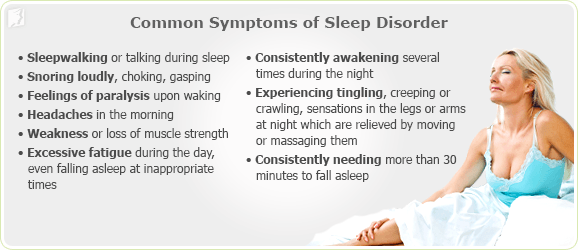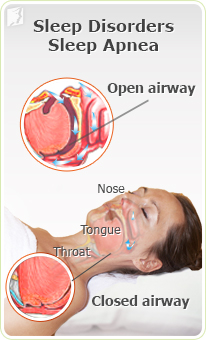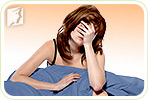Sleep Statistics
Approximately 16% of postmenopausal women report having trouble falling asleep, and 41% report waking up frequently during the night.
Sleep disorders can be difficult to deal with. Not only can they decrease overall sleep quality, but they can also negatively impact many aspects of daily life. The risk of sleep disorders increases with age, and they can be triggered by the hormonal fluctuations that typically occur during menopause, or by other menopause symptoms, such as night sweats.
Fortunately, it is possible to treat sleep disorders and achieve a restful night once again. Read on to discover more about what sleep disorders are, what their main characteristics entail, and how they affect daily life.
What Are Sleep Disorders?
On average, a healthy adult needs approximately seven to eight hours of undisturbed sleep per night. However, many women do not get sufficient sleep. Those with sleep disorders experience the persistent problem of going without the recommended amount of uninterrupted sleep, leading to a weakened immune system, increased anxiety, and possibly the worsening of pre-existing medical conditions.
This can also put a strain on professional or personal relationships, as naturally, women wake up more often during the night and as a result are tired and cannot concentrate as well during the day. The sleep cycle is highly important in maintaining well-being and a healthy immune system, and sleep disorders throw this into disarray.
Symptoms of Sleep Disorders
Sleep disorders can encompass a variety of symptoms and conditions. However, there are certain warning signs that are fairly common. If you are experiencing any of the following, you may have a sleep disorder:

Read on to learn more about the most common types of sleep disorders that menopausal women are likely to face.
Types of Sleep Disorders
There is a wide variety of sleep disorders, with a recent Gallup poll estimating 65 million sufferers of the 70 - 80 types of sleep disorders that exist. As people age, there is a tendency to get less sleep in general, as well as less time spent in the deepest, most beneficial periods of the sleep cycle. The following sleep disorders are the most common reported by menopausal women.
Insomnia
Inability to fall asleep or waking up on a frequent basis throughout the night.
Sleep apnea
The temporary cessation of breathing throughout the night.
Snoring
Oftentimes associated with sleep apnea, a loud, hoarse breathing that occurs during sleep.
Narcolepsy
Excessive daytime sleepiness that results in "sleep attacks", or an irresistible urge to sleep at inappropriate times.
Restless leg syndrome
Unpleasant sensation occurring in the legs at rest, producing an urge to move them, often characterized as aching, fidgety, or itchy.

The results of symptoms caused by these sleep disorders often closely correlate with other symptoms of menopause. For example, night sweats, the nighttime version of hot flashes, can disrupt sleep patterns by waking a woman up several times during the night. Sleep disorders can also lead to further depression and anxiety, which may make sleep difficult. This can result in an ongoing cycle of nighttime sleeplessness and daytime sleepiness.
Read below to learn more about how sleep disorders affect daily life, as well as other symptoms a woman undergoing menopause may be experiencing.
Effects of Sleep Disorders
While it is possible to suffer from sleep disorders such as sleep apnea and be completely unaware of this during the night, these interruptions in a woman's sleeping patterns can have a noticeable effect on her daily life. Some of the symptoms associated with insomnia are:
Striking Data
The rate of insomnia rises among women by 40% during the transitional period of perimenopause to postmenopause.
- Reduced capacity for learning, speech, and memory
- Inability to concentrate on daily tasks
- Higher chance of accidents, particularly in a car or operating machinery
- Tendency towards weight gain
- Weakened immune system
- Damage to personal or professional relationships
- Increased irritability
- Depression or fatigue
As sleep disorders continue, a woman's level of sleep deprivation grows, which can negatively impact a woman's health in a number of ways. Continue reading to know when it is time to seek professional help.
When to See a Doctor
Did You Know?
Sleep-related breathing disorders are associated with stroke, high blood pressure, psychiatric problems, and heart disease.
If a woman discovers that her breathing is impaired during the night due to sleep apnea, or if the persistence of sleep disorders is causing her to endanger herself or others, it is time to see a healthcare professional for diagnosis and treatment. Fortunately, there are ways to get to the root of the problem and experience a complete night's rest once again.
For further information, click on the following link to read and learn what causes sleep disorders.
Sources
- Kravitz, H.M. & Joffe, H. (2011). Sleep During the Perimenopause: A SWAN Story. Obstetrics and Gynecology Clinics of North America, 38(3), 567-586. doi: 10.1016/j.ogc.2011.06.002
- Love, S. (2003). Menopause and Hormone Book. New York: Three Rivers Press.
- National Heart, Lung, and Blood Institute. (2011). Your Guide to Healthy Sleep. Retrieved April 19, 2016, from http://www.nhlbi.nih.gov/files/docs/public/sleep/healthy_sleep.pdf



